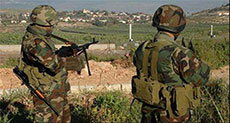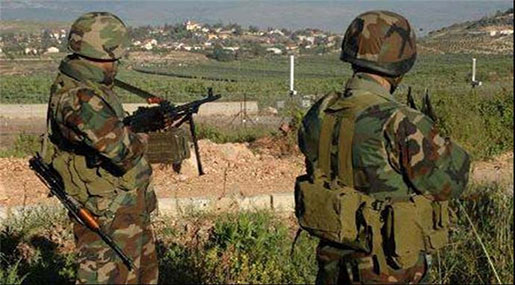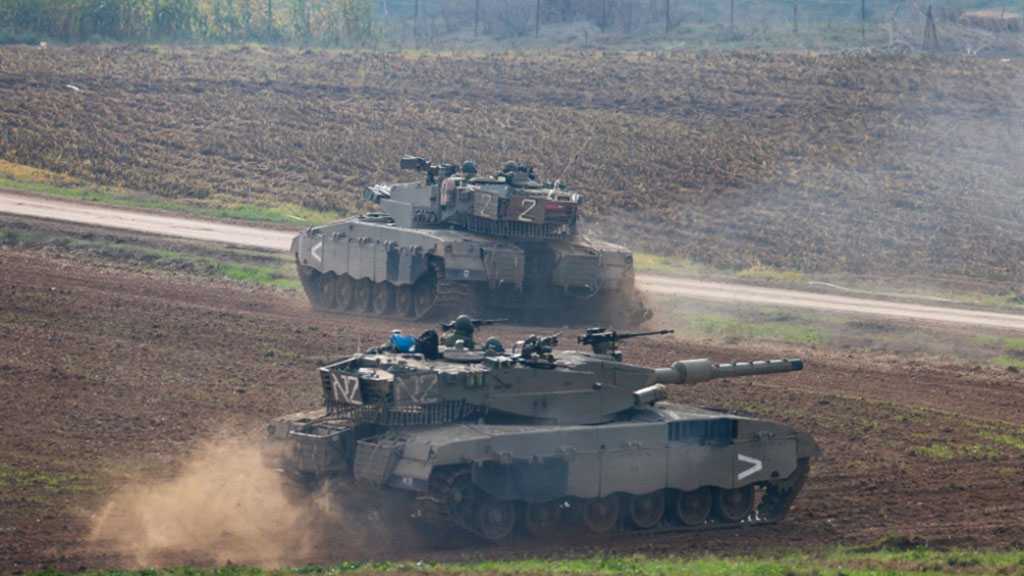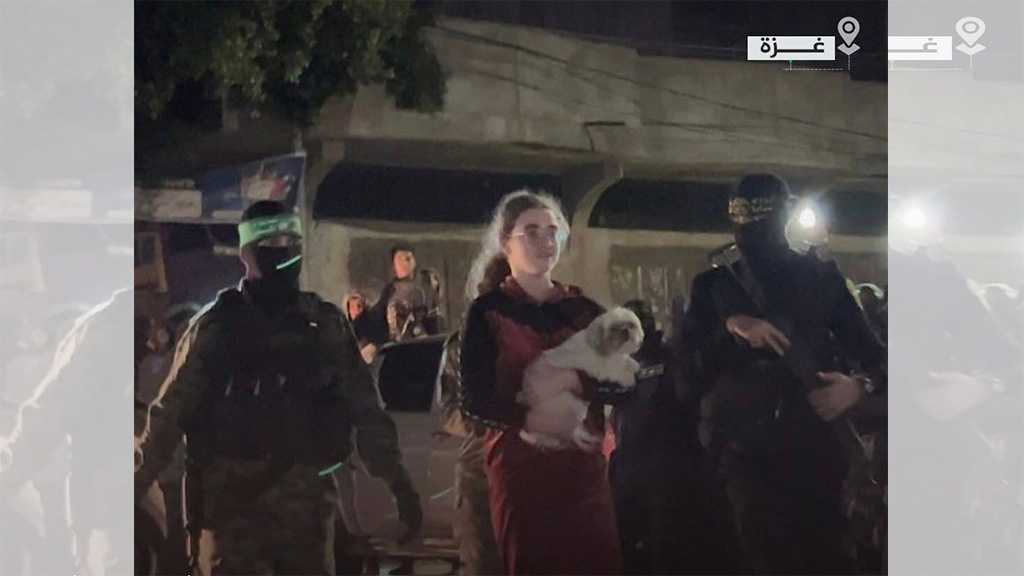
Hizbullah in Zabadani: We Fought Them Over and Under the Ground...

Nabil Haitham - As-Safir
"Keep your eye on Zabadani"... the field officer said confidently, then opting for silence, as if hiding something important. Then, he joined a group of young men who were resting from thetiring confrontations with the takfiri movements trying to capture that city.

They had their heart-to-hearts in their own language and words of the battlefield, recalling unforgettable scenes from the confrontations that have almost wrapped up their fourth week: here is where we broke in, there...we encircled an extremist group, they look weird, they do not care about their dead; they leave them on the ground and run away. Right there we hit a sniper, and there too...we took them by surprise and none of them remained alive.
"We fight them above the ground, and under it too," said the thirty-year old man as he spoke about the tunnels dug by the armed groups. These tunnels are similar to those that were found in Quseir in the past, each two to four meters deep and forty to a hundred meters long or even longer than that. It was said that one of the tunnels found in the Hay al-Wazeer area in the Southern part of the city was more than 300 meters long. The "excploration team" is still working in search of tunnels; especially since the resistance and the Syrian army have information that says there is a "network of tunnels" under Zabadani that constitutes a safe haven for the armed groups, as some of these tunnels even link two neighborhoods together. Two exploration teams work simultaneously; one in quest for the underground tunnels and the other to detect any traps or land mines.
These mines have been skillfully prepared, with some exceeding hundreds of kilograms of explosive material in weight.
"Here is where one martyr fell, and here fell another one, he was struck by a sniper's bullet," says one of the young men before the roaring interrupted him. It is a Syrian fighter jet, "messaging" the takfiris located in one of the buildings in the higher part of the town with a "heavy explosive; package and then disappearing in the sky. On the ground, bullets were gushing from the machine guns, missile launchers and howitzers; all targeting that particular spot and the surrounding buildings and cement blocks.
"These young men are the kings of the battleground, the masters of Zabadani," said another field officer, adding "as for them [the terrorist armed groups or the takfiris], they have become encircled within very few kilometers, and I mean very few [in a town no bigger than four hundred kilometers square]. Day by day their zone is shrinking; we are dealing with them slowly and according to a well-studied plan. This is in accordance with the guidance and orders given by the resistance and its leaders to the resistance's fighters: finish your mission at your own pace, do not rush, be alert, very cautious, decrease your losses, and take all the time you need, there is no reason to rush in doing things."
According to these guidelines, the field officer went on to say "currently we are slowly tracking them, step by step, bit by bit, we are tracing their presence in every house, every floor and every building. We are closer than they think or know with only a few meters separating us from them, we hear their voices clearly and in some places we are together with them in one building or even on the same floor, but they do not know it. All this puts the armed groups before two choices: either death or surrendering. There are hundreds of them.
One of the "kings of the battlefield" describes the nature of battles in Zabadani, explaining that the town has been totally besieged and encircled, adding "this was not the military plan at the beginning, there was no plan to completely encircle the city but the events of the battles forced such a situation."
He adds "at the beginning of the operation to liberate Zabadani, the resistance and the Syrian Arab army adopted certain tactics, leaving one single path for the terrorist groups to flee the city, yet they did not understand the message but rather thought we are unable to take control of the region where that exit lies. They tried to use this path, which we had completely monitored, to use it as a support line to bring in ammunition and reinforcement. That was when we had to cut that vein, and so it happened. Now the area is completely encircled. Air force jets were pounding the centers and locations of the terrorist groups around the clock and they were left with limited options: either death or surrender."
Up to this moment, the resistance cannot anticipate what the terrorist groups' next move would be in Zabadani; whether they will give in or not, especially since these groups in Zabadani do not belong to one single faction but rather different factions divided as follows:
Some of them are ideological, most of these are foreigners and from outside Zabadani (in reference to al-Nusra front). These are skillful people who have prior experiences in Afghanistan, Iraq, and Chechnya; and therefore are tough fighters. They pour into the battlefield in tens and hundreds at once.
Some of these are instructors who are highly qualified when it comes to combat skills, and were previously in the "Free Syrian Army", but are less effective than the ideological takfiris.
Some of them are opportunists from the city itself or the nearby areas who rode the waves of war. They are not numerous, and are not essential in the battles; they do monitoring or guard work at most. When the battle becomes intense, they are the first to flee. This also applies to another group of fighters, who are thieves, addicts or hooligans who carry a gun with any side in return for money. These are also the first to run away when the battles erupt and constitute no real threat.
From the words of the young resistance fighters, we can understand that there are calls being made somewhere... the ‘Ahrar al-Sham' had sent serious signs that it is willing to enter real negotiations to end the current situation in Zabadani; meaning it would drop its arms and its fighters would leave the city. (Most of the Ahrar al-Sham extremists are from Zabadani or the areas surrounding it), yet they have been under tremendous pressure exerted by the foreign armed terrorists [most of them from al-Nusra front].
The fact that the foreign terrorists are putting pressure on ‘Ahrar al-Sham' and prevent them from entering negotiations, dropping their arms and leaving the city, implies that these foreign fighters intend to fight to the death, this is one possibility. But there is another possibility that seems to make more sense from the resistance's point of view, which is the quick collapse that had been witnessed earlier in al-Quseir when the terrorist groups suddenly collapsed.
One of the young men narrates "On that day, Hizbullah's young men prepared for an attack in order to reach Quseir's main square, and when they entered the city it was empty. The terrorists had fled. Now, we in Zabadani think one scenario tops the list of possibilities: that we wake up one day to the sudden and dramatic collapse of the armed groups, maybe tomorrow or the day after, or even the one after that. Let us wait a bit, but I do not think we will wait too long.
The fact that the terrorist groups are entrapped in a very small and limited area amid very weak support lines and lack of ammunition and arms enhances the probability that these groups will soon collapse, hence either surrender or run away. The young resistance fighters highlight that these terrorist groups are trying to protect their posts basically through snipping, as shows evidence from the battle fields, noting that among their snipers are professional Tunisians and Chechens and that the major number of resistance fighter martyrs were targeted by snipers.
The young resistance fighters, along with the help of the Syrian army were able to solve the problem of snipers. At the beginning, they would try to locate the sniper's location and then try targeting him, but currently the tactics of targeting snipers have changed. Now, there is no need to track down the sniper's location precisely [in which apartment for instance or on what floor], but it is enough to know from which building is the sniper's fire coming from, and then that building would be turned into piles of a rubble; a tactic that proved to be successful.
In conclusion, the battle's field officer said "The Zabadani battle is over, the resistance and the Syrian army can end the battle in its entirety any time soon; the terrorists are left with no exit and jets are pounding the area by the clock. As for why the resistance and the Syrian army don't end the battle soon and finish it as quickly as possible, that is because the decision in Zabadani is political and not military. The timing is also political and not military, therefore; the final call belongs to the political leadership of the resistance and the Syrian army, who will choose the appropriate time to declare the collapse of Zabadani, in reality and officially.
The field officer points out that "this advance in Zabadani coincides with more advances in Palmyra, resistance in the Kafraya and Foua regions, as well as tough confrontation to the attacks in Dar'a lately. This also comes at a time when there are major preparations to terminate the chaos in Babila, Beit Sahem, and Hajar Aswad in the Outskirts of Damascus. Most important to coincide with the Zabadani battles is the expected decisive battle in the Arsal barrens.



